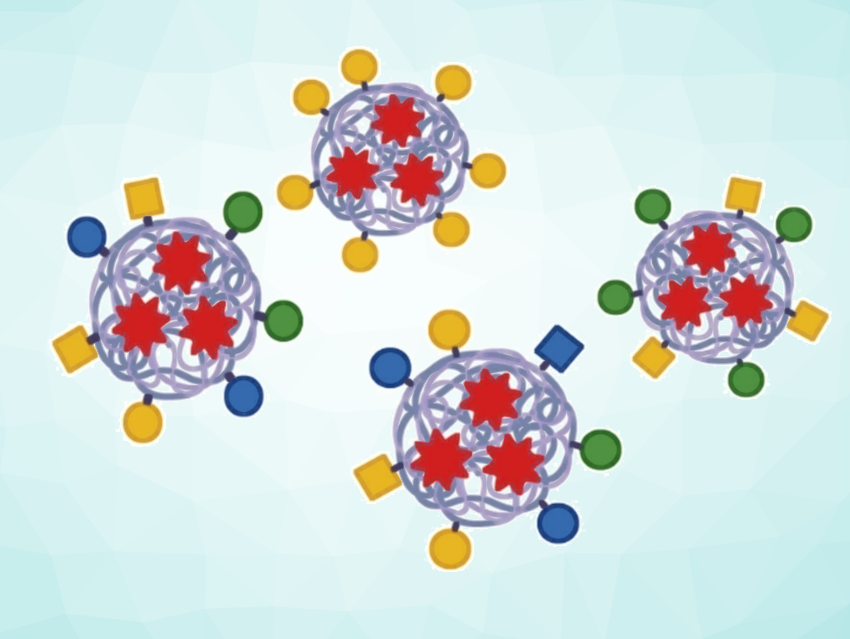Chronic inflammatory bowel disease (IBD), such as Crohn’s disease and ulcerative colitis, is on the rise worldwide. The benefits of current medications are often offset by problematic side effects. Hee-Seung Lee, Sangyong Jon, Korea Advanced Institute of Science & Technology (KAIST), Daejeon, Republic of Korea, and colleagues have developed a new method of treatment. It is based on nanoparticles that mimic the carbohydrate layer (glycocalyx) located on inflamed bowel cells and trigger anti-inflammatory effects in the diseased sites in the intestine.
A Need for New Therapeutic Approaches
Stomach cramps and severe diarrhea, often accompanied by significant weight loss, are some of the symptoms repeatedly suffered by patients with IBD, often for weeks at a time. The exact causes of this condition remain unclear but seem to involve a malfunction of the immune system. A cure is not yet in sight.
Current treatments aim to reduce symptoms with anti-inflammatory medications, such as 5-aminosalicylic acid (5-ASA), corticosteroids, and immunomodulators. Their long-term use is not recommended because of their severe side effects, such as a high risk of infection resulting from immunosuppression. The team developed a medication candidate that can be taken orally and targets the inflamed sites in the gastrointestinal tract, minimizing systemic effects.
Targeting the Carbohydrate-Rich Coating on Cells
The starting point of the researcher’s approach was the glycocalyx, a carbohydrate-rich layer that coats the cells on the surface of the intestine. Beneficial gut bacteria, which have their own matching glycocalyx, attach to this coating. With diseases from the IBD family, the glycocalyx carbohydrate patterns of inflamed intestinal regions are altered so that pathogenic bacteria can attach and enter the mucous membrane.
The team developed nanoparticles that mimic the glycocalyx pattern. They started with the five sugars most commonly found in Nature, glucose (Glc), galactose (Gal), mannose (Man), N-acetyl glucosamine (GlcNAc), and N-acetyl galactosamine (GalNAc). Using these sugars as monomers, they produced a library of different polymers using random copolymerization. The library consists of 31 glycopolymers: 5 homogeneous glycopolymers composed of each of the five sugar types and 26 heterogeneous glycopolymers composed of two, three, four, or five sugar types.
The team then attached bilirubin (BR) to each of the glycopolymers via an amide bond. The resulting glycopolymers self-assembled into glycocalyx-mimicking nanoparticles (GlyNPs). Bilirubin is a bile pigment that is an antioxidant naturally produced by the body and it has an anti-inflammatory effect.

Anti-Inflammatory Nanomedicine
When administered orally to mice with IBD, some versions of the synthesized nanoparticles reduced symptoms significantly better than the drug 5-ASA. Nanoparticles with mannose and N-acetylglucosamine were the most effective.
These two sugars increase uptake of the nanoparticles by activated macrophages in the inflamed intestine, and bilirubin efficiently inhibits the inflammatory activity of these immune cells. The concentration of certain inflammatory cytokines is significantly reduced, the production of anti-inflammatory factors is stimulated, and oxidative stress is reduced. The immunosuppressive effect is limited to the inflamed areas of the intestine, minimizing unfavorable systemic side effects.
The researchers point out that the method could also have potential for interventions in other organs that are also regulated by glycocalyx-binding-directed phenomena. However, they anticipate that the manufacturing of GlyNPs on a large scale while maintaining strict quality control standards may present challenges.
- Anti‐inflammatory Glycocalyx‐Mimicking Nanoparticles for Colitis Treatment: Construction and In Vivo Evaluation,
Dohyun Yoo, Chang‐Hee Whang, Jungwoo Hong, Dohyeon Kim, Monica Celine Prayogo, Youngju Son, Wonsik Jung, Seojung Lee, Hee‐Seung Lee, Sangyong Jon,
Angew. Chem. Int. Ed. 2023.
https://doi.org/10.1002/anie.202304815




